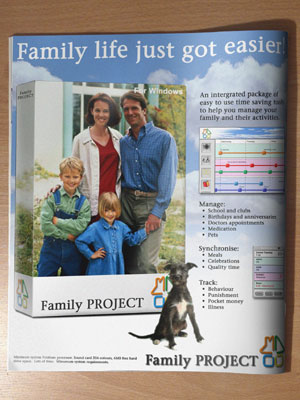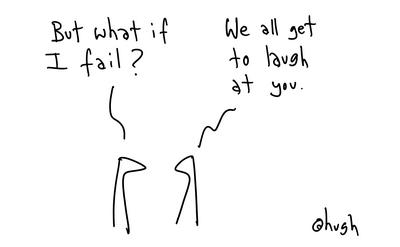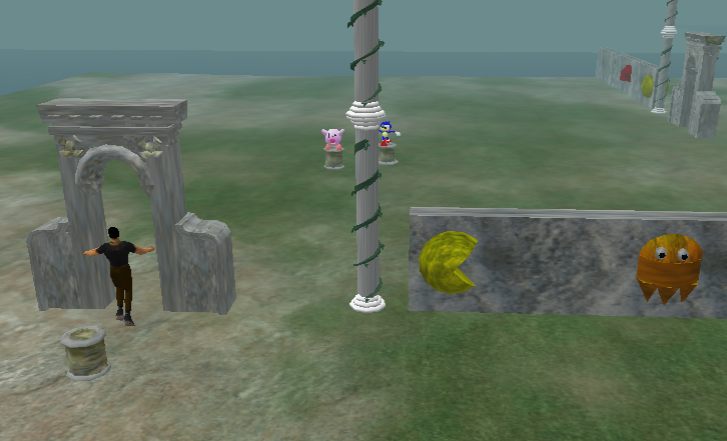Some of you may have noticed another voice on theoreti.ca. Guy Parkinson is now blogging here. Guy and I studied philosophy together at the University of Toronto and met in a Plato class. He is the New Media Technical Director for Brandworks a Toronto advertising and new media company.
Human Beans: Provocative Design

Human Beans create provocative concepts.
We make fictional products by hacking commercial culture and we design new services by working with real people
Our aim is to challenge assumptions and point in new directions, we diffuse our thinking through spam, the press, shop shelves and exhibitions.
Rust’s article gives examples of a number of ways that creative practices can intersect with research without becoming research. Artists can generate a world within which researchers can understand and pose questions for methodological research. Artists can provoke questions. Artists can re-present knowledge in more communicative ways. Above all, for Rust, the contribution of the artist is not the explicit propositional knowledge that can be reviewed and tested. The contribution of an artist is something that the audience has to interpret and complete. It isn’t art if an artist studies the use of their work and tries to plan its interpretation to constrain a particular thesis. I should add that Rust seems to have been involved in the UK discussions around what we call research/creation here in Canada.
20 sites
I just stumbled on this remarkable art project by Tom Phillips (his Humument project was mentioned here earlier by Geoffrey in connection with emergent/altered texts). He has created slideshow galleries of 20 locations around London that he has photographed once each year for the last 35 years. Watching, we see some sites barely change while some are dramatically altered.
Oddly, what struck me most was the transformation of the cars: abstractly I remember those generations of cars (or their north american relatives) from my childhood on up, though I can no longer place them in any visual context in memory, except in a sort of cinematic way.


Productivity Illuminated by Email
An interesting story on a study from MIT. Using datamining techniques, researchers looked at corporate email use and draw some interesting conclusions on productivity — measuring information-worker productivity being an area considered particularly difficult, apparently. The specific conclusions presented in the overview aren’t breathtaking, indeed, they rather confirm the sorts of things about people I like to assume, and their broader conclusions sound slightly breathless, but plausibly move beyond mere speculation.
What is most interesting is the appearance of email as a starring player at a time when most people talking about digital communication seem to have given up on it; of further interest would be application of some ideas behind the research to non-email communication.
First found at bettercourse.org (via infovore) where more interesting comments may be found.
Social Marketing wisdom from the cartoonist

I just discovered Hugh MacLeod and in the course of browsing his cartoons stumbled on this gem:
Somewhere along the line I figured out the easiest products to market are objects with “Sociability” baked-in. Products that allow people to have “conversations” with other folk. Seth Godin calls this quality “remarkablilty”.
For example: A street beggar holding out an ordinary paper cup cup won’t start a conversation. A street beggar holding out a Starbucks cup will. I know this to be true, because it happened to me and a friend the other day, as we were walking down the street and a guy asked us for some spare change. Afterwards, as we were commenting about the rather sad paradox of a homeless guy plying his trade with a “luxury” coffee cup, my friend said, “Starbucks should be paying that guy.”
Actually, my friend is wrong. Starbuck’s doesn’t need to be paying the homeless guy. Because Starbucks created a social object out of a paper cup, the homeless guy does their marketing for free, whether he knows it or not.
Although I suspect he does. I suspect somewhere along the line the poor chap figured out that holding out a Starbucks cup gets him more attention [and spare change] than an ordinary cup. And suddenly we’re seeing social reciprocity between a homeless person and a large corporation, without money ever changing hands. Whatever your views are on the plight of homeless people, this is “Indirect Marketing” at its finest.
This, along with a recently read post by Doc Searl, leaves me wistfully wondering why I never hear this kind of talk from the marketing people I know. Not that I want to encourange any of them to think up new ways to exploit the homeless.
LEGO Brick: 50 years

You know something is up when Google’s graphic of the day is made of LEGO blocks – it is the 50th anniversary of the LEGO block. Gizmodo has a nice LEGO Brick Timeline: 50 Years of Building Frenzy and Curiosities. They explain that Google founders Page and Brin used LEGO blocks to build an expandable disk storage casing for their prototype search engine in 1996.
Second Life Games Experiment

So I’m teaching a course on digital games and I’ve asked students to create a sculpture of an historic character from videogame history in Second Life. In the picture above you can see the Sculpture garden that Dave Marhal has created on the McMaster Library island where students will place their sculptures. When its done, I hope you will visit.
Project Gutenberg: The Killer App
Michael Hart of Project Gutenberg, wrote a provocative answer to Willard’s question (Humanist Discussion Group, Vol. 21, No. 495) about the “killer-app” of digital humanities that I reproduce here verbatim:
True, you can’t convince the skeptics. . .you still can’t say that digitial music has wiped out analog music because a few places still make analog records which are really better, not that a true skeptic needs those last few words.
Even when there are more eBooks than paper books, no way.
Even when there are 100 times as many eBooks, not happening.
It’s not going to matter what they SAY about eBooks, reality is going in that direction and paper books will never reverse that trend, simply because you can /OWN/ MILLIONS OF eBOOKS IN A TERABYTE DRIVE [costing under $200].
Before Gutenberg the average person could own zero books.
Before Project Gutenberg an average person could own 0 libraries.
It’s literally as simple as that.
The cost/benefit ratio for eBooks is too much better than paper.
Thanks!!!
Is he right?
NYT: Cell phone novels take off in Japan
The New York Times has a story by Norimitsu Onishi,
Thumbs Race as Japan’s Best Sellers Go Cellular – New York Times, about how novels written in snippets on cell phones and posted to special blogs and then published in print were five of the top ten best-selling novels.
The boom appeared to have been fueled by a development having nothing to do with culture or novels but by cellphone companies’ decision to offer unlimited transmission of packet data, like text-messaging, as part of flat monthly rates. The largest provider, Docomo, began offering this service in mid-2004.
I wonder if the serialization over time builds anticipation and sales? Does writing them on a cell phone change the prose?
Spinuzzi and Digital History Hacks
Clay Spinuzzi has a blog, Spinuzzi, that was recommended on Humanist. His recent posting a long thoughtful reflections on methodology, especially as applied to rhetoric and writing research. He comments on Composing Research by Cindy Johanek which critiques the ostensibly anectdotal methods of many researchers in rhetoric and communication.
Another blog that Shawn Day pointed me to is William J. Turkel’s Digital History Hacks. He writes longer posts on topics like What’s the Opposite of Big History? He is comfortable with programming and hardware design.